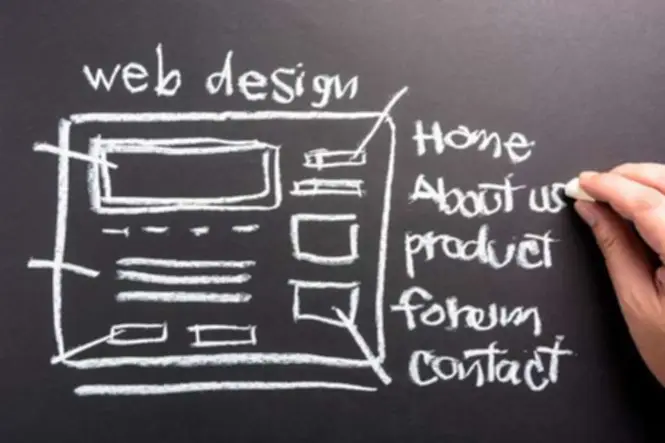Legacy techniques check with older applied sciences, software, and processes which were in place for an extended period. These systems often lack flexibility, battle to integrate with modern applied sciences, and are difficult to maintain or enhance. Amidst evolving technological disruptions, legacy systems risk slowing down the tempo of innovation for companies. As these are often the technical spine of their operations, it’s important to update these systems if corporations are to stay aggressive, adapt to changing market tendencies, and drive operational efficiency. However, achieving profitable digital transformation is usually hindered by legacy methods that struggle to keep tempo with the demands of the fashionable world.
The True Value Of Legacy Systems
Two major drivers for legacy utility modernization are hybrid cloud and multi-cloud. With OpenLegacy Hub’s legacy modernization tools, you presumably can construct, automate, and handle your legacy integrations in one place. Reuse and deploy these in any cloud surroundings with our language-agnostic platform, future-proof your innovation strategy, and avoid vendor lock-in. Another challenge is surmounting legacy obstacles caused by inflexible structure.

The Most Effective Software Modernization Framework For Legacy Methods
Furthermore, Avato’s collaborations with managed service providers enhance their capability to supply complete solutions, establishing them as a dependable companion in conventional integration. Furthermore, integrating legacy techniques with APIs and adopting a microservices structure promotes reusability of functionalities. As particular functionalities are exposed through APIs, they can be simply reused by other purposes or providers, both inside the group and externally. This enhances effectivity, reduces duplication of efforts, and encourages innovation via the creation of recent functions that can leverage the legacy system’s capabilities. From improved customer experiences to reduced operational costs, legacy modernisation can yield advantages that may help businesses thrive within the age of AI.
Why Modernize Legacy Applications?

This sensible strategy allows older legacy know-how methods to be suitable with fashionable, extra superior solutions. A financial providers firm was in a position to streamline its mainframe operations and speed up modernization by collaborating with exterior companions for strategic steering. By leveraging external experience, the corporate achieved a more environment friendly and efficient modernization course of, leading to improved operational performance and reduced costs.
At Attract Group, we specialize in serving to companies modernize their present methods by adopting the right modernization strategy to rework them into dynamic, future-ready platforms. Our tailored modernization solutions, integral to effective legacy system modernization methods, assist companies enhance operational effectivity, reduce costs, and achieve a competitive edge. Finally, the journey toward modernization isn’t merely a technical upgrade; it’s a strategic crucial that may unlock new alternatives for progress and innovation. Embracing this transition will empower organizations to thrive in an increasingly aggressive digital panorama, paving the way for a future defined by agility, effectivity, and sustained success.
My passion for artificial intelligence and large language fashions (LLMs) drives our focus on automation, significantly boosting effectivity and remodeling enterprise processes. Rebuilding takes modernization to the next stage by creating a model new utility from scratch while retaining the core enterprise logic of the legacy system. This strategy permits companies to design a state-of-the-art solution that includes the newest technologies and design ideas, tailored to satisfy current and future requirements. For instance, a supply chain management system may be replatformed to run on a cloud-native infrastructure like Kubernetes. This shift may enhance resource allocation, enable faster deployments, and support more dynamic scaling. Replatforming is very efficient for organizations in search of to modernize incrementally with out disrupting their existing operations.
Showcasing early wins illustrates the tangible benefits of modernization and secures stakeholder buy-in. Containerization is a key technology that simplifies application administration via legacy application transformation consistent environments. A uniform runtime setting offered by containerization reduces dependency issues and accelerates deployment cycles. The overall benefits of containerization lead to improved scalability of applications and ease their administration. Several patterns primarily based on specific wants and constraints can modernize functions. An iterative method to modernization allows for danger mitigation and ensures early wins, offering a framework for steady enchancment.
- Maintaining safety standards at every stage of the modernization journey is essential to forestall vulnerabilities.
- These methods, also recognized as legacy software program, had been typically in-built isolation, using proprietary technologies and protocols that may not be suitable with newer methods or APIs.
- These systems encompass a wide variety of applied sciences, together with outdated hardware, software program and knowledge storage solutions.
- Legacy systems, restricted by outdated applied sciences, can impede agility and efficiency.
- Each approach provides completely different benefits and can be tailored to fulfill particular enterprise and technical constraints.
- Reworking monolithic functions into microservices boosts deployment effectivity and useful resource utilization.
These methodologies break down monolithic purposes into smaller, more manageable elements, permitting for unbiased scaling and quicker updates. Cloud-native architectures considerably enhance the scalability and flexibility of modern purposes. Modernising applications can lower ongoing assist costs, increase efficiency, and improve system efficiency, ensuring sooner processing, higher total functionality and improved important business processes. Modernisation removes limitations imposed by outdated techniques, allowing companies to streamline operations, automate workflows, and adopt progressive options.
Fastidiously planning the scope of modernisation ensures that each one key areas are properly addressed. Discover how vFunction accelerates modernization and boosts application resiliency and scalability. Adobe’s transformation of a huge monolith into micro-frontends was a key step in this journey. As one of many largest brick-and-mortar retailers in the world, Walmart had long dominated bodily retail. Nonetheless, the rise of e-commerce and cellular buying pressured Walmart to rethink its approach https://www.globalcloudteam.com/ to expertise.

It’s important to conduct an intensive cost-benefit analysis React Native, weighing the preliminary prices, ongoing maintenance, and potential savings, alongside the long-term value when it comes to effectivity and scalability. This incremental approach avoids a “big bang” migration by enabling step-by-step modernisation, making certain smoother transitions with minimal disruption. Moreover, implementing changes in non-peak hours additional mitigates operational impression. Upgrade safety measures to safeguard knowledge and guarantee compliance with industry requirements. Conduct each automated and guide testing to guarantee the modernised software operates easily, with minimal downtime or disruptions. By modernizing with vFunction, Development Micro ensured they may continue to provide cutting-edge safety solutions to their prospects, protecting them from emerging threats.
Modern applications can benefit from decoupled databases, as every microservice has its personal database. Microservices and decoupling data allow groups to determine on one of the best database for the performance they’re growing. Agile and DevOps practices promote shut collaboration between operations and improvement groups. This permits for a smoother and sooner transfer of applications from development to production, with out compromising security, high quality, and stability. Continuous integration (CI), automates repetitive and manual construct, testing, deployment, and maintenance. Steady supply (CD), seamlessly guides the applying through each stage of the pipeline till it’s launched.